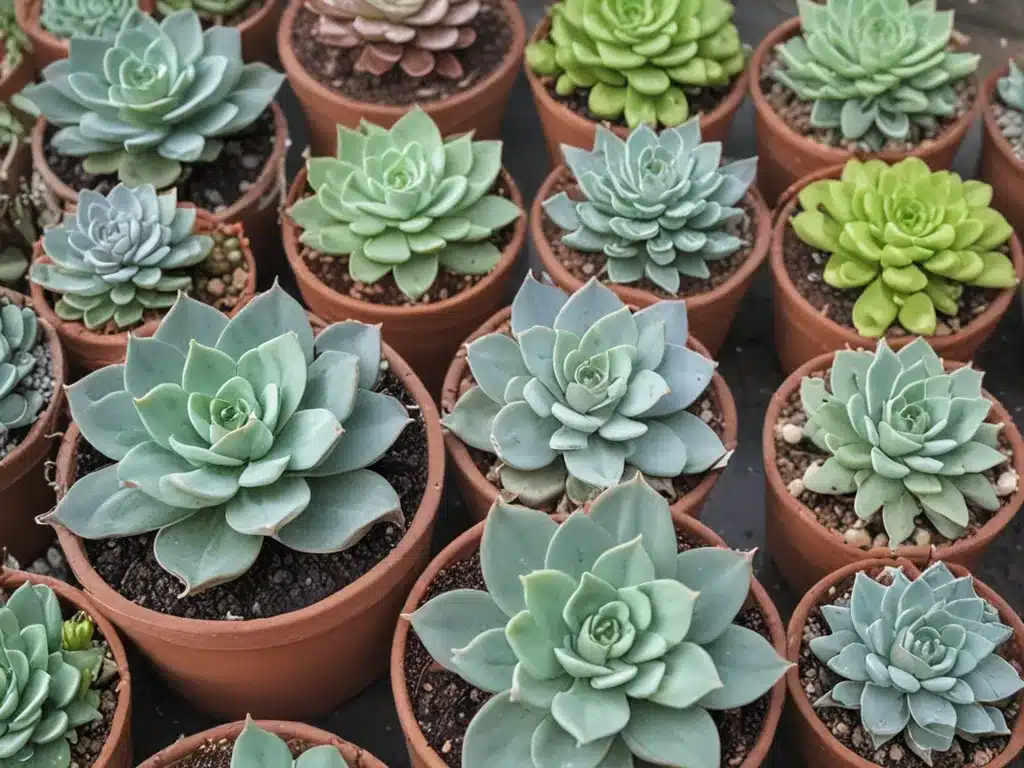
Choosing Plants for My Home
As I look forward to spring, succulents are top of mind for bringing colorful plant life into my home. With their drought tolerance and low maintenance needs, succulents are excellent options that allow me to enjoy greenery without demanding a “green thumb.” When selecting plants, I consider factors like available sunlight, decorative appeal, and special seasonal offerings from local nurseries.
One question I have is what types of succulents thrive indoors. Many stores highlight echeveria, haworthia, kalanchoe, and sedum as good choices that tolerate lower light. Echeveria comes in an array of rosette shapes and colors like coral, pink, and lime green. Kalanchoe ‘s thick leaves hold water well and many varieties bloom small flowers. Sedum‘s thick, fleshy leaves come in various shades of green, red, and gold. To determine if my home provides enough sunlight for certain succulents, I test different spots with a plant to observe how it reacts over a few weeks.
Another question pertains to containers – will terra cotta pots wick away more moisture than glazed ceramic or plastic? While terra cotta is attractive, I worry it may dry out succulents faster than other materials. Some research indicates unglazed terra cotta can decrease humidity around roots, so I opt for water-holding pots.
With these factors in mind, I’ll be on the lookout for specials at local greenhouses during their spring stocking. Browsing unique specimens at fair prices is an enjoyable way to start collecting new plants for my space.
Spring Stocking Events at Local Nurseries
Each spring, my favorite greenhouses hold stocking events with discounts on succulents, annuals, vegetables and more. This year, I’m especially interested in what sales Ocean Breeze Nursery and Golden State Growers will offer. Both nurseries pride themselves on selecting hardy, attractive varieties suited to our climate.
Last spring, Ocean Breeze debuted an exclusive line of hybrid echeveria in shades of magenta, peach and gold. They were more colorful than typical rosettes. I’m hoping they’ve expanded this line with new colors and forms this year. I also appreciate that Ocean Breeze groups their succulents by light and water needs, making selection easier. This is helpful for someone like myself just starting a collection.
At previous Golden State Growers sales, I’ve found unique specimens like graptosedum ‘Vera Higgins’ with its dark purple leaves striped in lime. They also offer lesser known genera like crassula and cotyledon in addition to popular types. I enjoy learning about new succulents from the nursery staff. It’s rewarding to try varieties beyond the standards.
By visiting both events, I can compare their selections and prices. Notes from previous years indicate Ocean Breeze often has better deals on commonly available types. But Golden State Growers offers rarer cultivars not found elsewhere, if I’m willing to pay a higher cost. With the right sale prices, maybe I’ll bring home specimens from both nurseries this spring.
Caring for My New Succulent Collection
Now that I’ve selected several new succulents, the next question is how to care for them properly. As tropical and desert plants, succulents have different needs than typical houseplants. To start, I’ve prepared well-draining cactus mix soil in containers with drainage holes. I’ll keep new plants in a bright,Indirect light area and check soil moisture frequently to avoid overwatering.
In addition to watering based on dry soil rather than a schedule, I’ve read succulents appreciate a “grow light” during winter months when natural light levels decrease. A simple clamp light with a full spectrum bulb above my collection area could provide the extra photons they require. Another option some experts recommend is bottom-watering – setting pots in a tray of water so they drink up moisture slowly from below instead of overhead splashing. This prevents soil issues like mold.
Fertilizing succulents also differs from other houseplants. They only need nutrients during their active growing season, typically spring and summer. A dilute, balanced liquid plant food high in phosphorus and potassium applied monthly should suffice. Come fall, I’ll taper back watering and stop fertilizing altogether to encourage dormancy. With any luck following these basic care guidelines, my new succulents will thrive indoors all year.
Sharing Succulent Cuttings with Friends
Now that I have established a collection started from nursery stock, another question arises – can I multiply my plants by taking cuttings to share? Many types of succulents readily root from stem or leaf cuttings, allowing collection growth without cost. Before attempting, I researched proper techniques to ensure success.
From echeveria, sedum, and kalanchoe, taking stem or leaf cuttings is relatively simple. Using sharp, clean shears, I make slanted cuts just below a set of leaves, leaving a few inches of stem. For leaf cuttings, I’ll sever the leaf from the stem with a short stalk intact. The next step involves allowing the cut end to callous and dry for a few days to prevent rot.
Once cuttings have dried, I can gently remove the bottom leaves and dip the ends in rooting hormone powder as an optional extra step to encourage new roots. Placing cuttings on damp, well-draining soil lined with perlite or sand, I’ll keep the area warm and bright yet out of direct sun. Checking soil moisture but avoiding overly wet conditions, new growth should start within a few weeks.
With any harvest, I plan to share rooted plants with gardening friends as a thank you for their plant swaps and advice. What better way for a new collector to expand while spreading succulent joy? I expect harvests in late spring from the cuttings I take now as temperatures warm.






